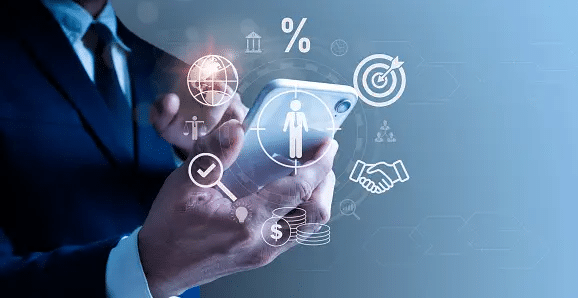Businesses must navigate a vast sea of information to make strategic decisions that resonate with their target audience. Regarding public relations (PR) for your business website, more than relying on guesswork is required. Enter data-driven decision making – a powerful approach that leverages big data to inform and optimize PR strategies.
By embracing data-driven decision-making, businesses can unlock various benefits for their PR efforts. From refining messaging to targeting the right audience segments, the right data empowers you to use real-time data to make informed choices that maximize your PR impact.
This extensive guide aims to explore the concept of data-driven decision-making in public relations (PR). Additionally, we will offer valuable insights and practical strategies to enhance the PR performance of your business website. Let’s delve into the importance of data-driven approaches for business leaders and discover how they can empower your PR success.
Understanding Data-Driven Decision Making
Data-driven decision making is a systematic business intelligence approach that uses data analysis and insights to guide strategic choices and actions. PR means using data to make business decisions and optimize public relations strategies.
Basically, by leveraging data’s potential, organizations can acquire valuable insights about their target audience, evaluate their campaigns’ efficiency, and make well-informed decisions that aid in attaining success in public relations.
Data plays a crucial role in PR, providing the foundation for understanding audience behavior, preferences, and trends. By analyzing data, businesses can uncover patterns, identify opportunities, and tailor their messaging and PR activities. This data-driven approach empowers businesses to optimize their PR efforts and achieve meaningful results.
Some companies leverage data-driven PR decisions:
- Starbucks uses data to inform its PR strategy, including tracking customer sentiment on social media, analyzing sales data, and conducting market research. This data helps Starbucks to identify trends, target its messaging, and measure the effectiveness of its PR campaigns. Starbucks used data to launch a successful PR campaign around its #RaceTogether initiative. The campaign was designed to spark race and social justice conversations, generating over 1 million social media engagements.
- Nike also uses data to inform its PR strategy. In 2017, Nike launched a data-driven PR campaign around its “Dream Crazy” ad featuring Colin Kaepernick. The ad was a major success, generating over 28 million views in the first 24 hours. Nike’s use of data helped it to target the right audience, create a compelling message, and measure the success of its campaign.
Implementing Data-Driven PR Strategies
Implementing data-driven PR strategies requires a systematic approach incorporating key steps to leverage data effectively. By following these steps, businesses can harness the power of data to inform their PR decisions and drive success. Let’s explore the process of implementing data-driven PR strategies in detail:
Set Measurable Goals and Define Key Performance Indicators (KPIs)
Setting well-defined and quantifiable objectives is the initial phase of incorporating data-driven PR strategies. What are your objectives in terms of accomplishing results through your PR endeavors? Whether it’s increasing brand awareness, driving website traffic, or generating leads, define specific objectives that can be quantified. Aligning these goals with your broader customer acquisition strategy ensures your PR efforts support long-term growth.
Once you have your goals, identify key performance indicators (KPIs) that align with those objectives. KPIs serve as measurable metrics that indicate the progress and effectiveness of your PR campaigns. PR-related KPIs include media mentions, website referral traffic, social media engagement, and lead conversions. Select KPIs that directly reflect your goals and ensure they are measurable and trackable.
Identify Data Sources and Tools for Data-Driven Decision Making
You need access to relevant data sources and tools to implement data-driven PR strategies. Certainly, start by identifying the sources from which you can gather PR data. This can include media monitoring platforms, social media analytics tools, web analytics platforms, customer surveys, or CRM systems.
Each source provides valuable data points that can inform your PR decisions. For example, pairing PR metrics with insights from conversion funnel optimization can highlight where messaging drives real business impact.
Additionally, explore data tools that can assist in analyzing and visualizing your PR data effectively. These tools can help you uncover insights, identify trends, and measure the impact of your PR efforts. Finally, examples of data tools include Google Analytics, social media analytics platforms, sentiment analysis tools, and media monitoring dashboards.
Gather and Analyze PR Data
Once you have identified your data sources and tools, it’s time to gather and analyze PR data. Collect data from various sources, including media coverage, social media engagements, website analytics, and customer feedback. This data can provide insights into audience behavior, media sentiment, content performance, and campaign reach.
Next, apply data analysis techniques to extract meaningful insights. Look for patterns, trends, and correlations within your data to understand what’s working and needs improvement. For example, analyze media coverage to identify the most successful PR channels or examine social media engagement metrics to gauge the impact of your campaigns.
By analyzing data, you can uncover valuable insights that inform your PR strategies and tactics.
Track and Monitor PR Metrics for Data-Driven Decision Making
Tracking and monitoring PR metrics is essential for continuous improvement and optimization. Regularly monitor your KPIs and PR campaigns’ performance. This approach allows you to assess the efficiency of your strategies and make data-informed adjustments when necessary.
Establish a reporting system that regularly updates PR metrics and their progress toward your goals. Use visualizations, dashboards, or regular reports to communicate these insights effectively to stakeholders. By tracking and monitoring PR metrics, you can identify areas for improvement, capitalize on successful tactics, and adapt your strategies to maximize results.
Leveraging Data to Optimize PR Campaigns
Data-driven PR strategies help make informed business decisions and enable businesses to optimize their campaigns for maximum impact. Further, by leveraging data effectively, PR professionals can identify target audience segments, tailor messages, optimize media outreach, and measure campaign effectiveness. Let’s explore how data analytics can be leveraged to optimize PR campaigns:
Using Data to Identify Target Audience Segments and Tailor PR Messages
Data is crucial in understanding your target audience and tailoring PR messages to resonate with them. Moreover, by analyzing demographic data, psychographic information, and behavioral patterns, you can identify specific audience segments most likely to engage with your brand. Indeed, this data-driven approach enables you to craft relevant, compelling, impactful messages for each segment.
Segmentation data helps you understand different audience groups’ unique preferences, interests, and pain points. By tailoring your PR messages to address these specific needs, you can increase engagement and enhance the effectiveness of your campaigns.
Data-driven insights can also guide you in selecting the appropriate communication channels, tone of voice, and messaging strategies to connect effectively with your target audience segments.
Data’s Role in Media Outreach, Influencer Selection, and Content Creation
Data regarding media outreach, influencer selection, and content creation for PR campaigns is invaluable. By analyzing media landscape data, you can identify relevant journalists, bloggers, and media outlets that align with your company’s mission, target audience, and industry. Nonetheless, this enables you to tailor your outreach efforts, pitch stories likely to resonate with journalists, and increase your chances of securing media coverage.
Furthermore, data can help identify influential voices and opinion leaders within your industry. By leveraging social data visualization, media analytics, and influencer marketing platforms, you can gather key insights on potential influencers’ reach, engagement, and audience demographics. This data-driven approach allows you to select influencers who align with your brand values and have the most impact on your target audience.
Data can guide your decision-making process when it comes to content creation. By analyzing content performance metrics, such as social media engagement, website traffic, and content shares, you can identify the types of content that resonate the most with your audience.
Conducting a content gap analysis can further refine your messaging strategy and reveal untapped PR opportunities. This insight from raw data can inform your content creation strategy, helping you produce high-quality, engaging content that drives PR success.
Using Data to Measure PR Campaign Effectiveness and Make Data-Driven Adjustments
Measuring the effectiveness of PR campaigns with actual data is essential for continuous improvement and optimization. Data offers valuable insights into an organization’s success and the impact of PR endeavors, enabling you to assess the effectiveness of your campaigns and make informed adjustments based on data.
Set specific metrics and KPIs aligned with your PR goals, such as media mentions, website traffic, social media engagement, or lead conversions. Regularly track and analyze these metrics to measure the effectiveness of your PR campaigns. Data-driven analysis helps you identify areas of success and areas that need improvement, enabling you to refine your strategies and tactics accordingly.
Importance of Ongoing Data Analysis and Optimization in PR Strategies
Data-driven PR is an ongoing learning process that requires continuous data analysis and optimization. By regularly analyzing data and monitoring campaign performance through data management, you can identify trends, measure the impact of your strategies, and make informed decisions to optimize your PR efforts.
Utilize data-driven insights to pinpoint areas for enhancement and experiment with various approaches to determine the strategies that resonate the most with your intended audience. Implement A/B testing for PR messages, media pitches, or content formats to gather data for further insights. Combining these learnings with an effective UX strategy ensures campaigns are not only data-driven but also user-centered.
Additionally, analyze relevant data sets to monitor industry trends and changes in customer experience and audience behavior. This allows you to adapt your PR strategies and messaging to stay ahead of the curve and maintain a competitive edge.
Common Challenges in Adopting Data-Driven Decision Making for PR
While data-driven decision-making in PR offers numerous benefits, it has challenges. Overcoming these hurdles and fostering a data science-driven culture within an organization is crucial for long-term success. Let’s explore some common challenges and strategies to address them, along with the importance of data privacy, data culture and ethics, and future trends in data-driven PR decision making:
Lack of Data Literacy
One of the primary challenges in adopting data-driven decision-making is the need for more data literacy within the PR team. Many professionals may need to become more familiar with data analysis techniques and need help extracting meaningful insights from data. Providing training and resources to enhance data literacy can bridge this gap.
Data Quality and Integration with Data-Driven Decision Making
Obtaining high-quality data from diverse sources and ensuring seamless integration can be challenging. Only accurate or complete data can lead to good insights and decision-making. Investing in data quality assurance measures, data cleaning processes, and robust integration systems can help address this challenge.
Resistance to Change
Organizations with traditional PR practices may face resistance to adopting data-driven decision-making. Team members may need to be more open to embracing new methodologies and technologies.
Showcasing success stories and pairing them with a strong growth marketing framework can ease adoption and highlight measurable wins. To overcome this, it is essential to communicate the benefits, provide clear guidelines and support, and showcase success stories from early adopters.
Strategies for Overcoming Challenges and Fostering a Data-Driven Culture
Adopting a data-driven culture can transform how organizations make decisions, but it often comes with significant challenges. This guide explores effective strategies for overcoming these obstacles and fostering a culture where data informs every level of decision-making. Moreover, discover practical approaches to integrate data seamlessly into your organization’s operations and drive meaningful change.
Educate and Train with Data-Driven Decision Making
Provide training programs and resources to enhance data literacy among PR professionals. In fact, to enhance the team’s ability to analyze and interpret data effectively, consider providing workshops, online courses, or internal knowledge-sharing sessions that equip them with the required skills.
Promote Collaboration
Encourage collaboration between PR professionals and data analysts. Foster an environment where PR and data teams can leverage data insights and make informed decisions. This collaboration can generally lead to innovative approaches and a deeper understanding of the impact of PR efforts.
Lead by Example using Data-Driven Decision Making
Leadership support is crucial in fostering a data-driven culture. Subsequently, executives and managers should embrace data-driven decision-making and promote its adoption within the organization. This sends a strong message that data-driven practices are valued and encouraged.
Prioritizing Data Privacy, Ethics, and Security in Data-Driven PR Practices
Data privacy, ethics, and security should be paramount in data-driven PR practices. As organizations collect and analyze data, it is crucial to prioritize the protection of personal and sensitive information. Adhere to data privacy regulations, obtain consent when necessary, and implement robust security measures to safeguard customer data from breaches or unauthorized access.
Ethics should guide the responsible use of data. Ensure the data collection process and use transparency, respect user privacy, and avoid unethical practices such as data manipulation or misleading interpretations. Upholding ethical standards builds trust with stakeholders and protects the organization’s reputation.
Still, the field of data-driven PR decision making continues to evolve, and several trends and developments are worth considering. These include:
Artificial Intelligence (AI) and Machine Learning
AI-powered tools can analyze vast amounts of data and uncover valuable insights. Particularly, AI can automate data analysis, media monitoring, sentiment analysis, and even assist in content creation and media outreach.
Predictive Analytics with Data-Driven Decision Making
Predictive analytics utilizes historical data and advanced machine learning algorithms to forecast future trends and outcomes. In addition, PR professionals can leverage predictive analytics to anticipate audience behavior, identify emerging trends, and proactively tailor their strategies.
Integrated Data Platforms
Integrated data platforms merge different data sources, including social media analytics, web analytics, and media monitoring, into a unified system. This allows for comprehensive data analysis and cross-channel insights to inform PR decision-making.
Frequently Asked Questions
What’s the difference between data-driven PR and traditional PR?
Can small businesses use data-driven PR without big budgets?
How often should PR data be reviewed?
Does data-driven PR replace creativity in campaigns?
What are some risks of relying too heavily on data in PR?
Conclusion
In today’s digital landscape, data-driven decision-making has become increasingly vital in business and PR for business websites. Throughout this blog, we explored the significance of incorporating data-driven strategies, their associated challenges, and strategies to overcome them.
As you navigate the ever-changing realm of PR, we strongly urge you to acknowledge the advantages of data-driven decision-making and actively pursue continuous optimization of the analytics process. Specifically, by leveraging data insights, you can better understand your target audience, craft compelling messages, and adapt your strategies to achieve maximum impact.
In detail, at LeadAdvisors, we understand the power of data-driven PR and offer comprehensive data analytics and solutions to help businesses thrive in their data analysis and PR efforts. Our expertise in data analysis, media monitoring, and strategic insights can empower your PR campaigns, enabling you to make data-driven decisions confidently.
Moreover, now is the time to harness data and the potential of data-driven PR and elevate your business website’s PR to new heights. Start implementing data-driven strategies, stay informed about industry trends, and continuously optimize your business strategy and PR efforts for long-term success.
















